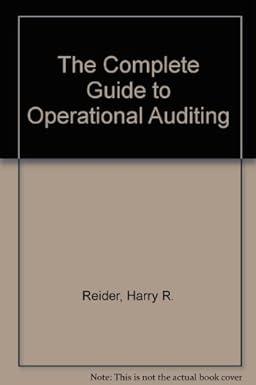This is one question, please answer in the same format as the question

a Sheridan Inc, a publicly accountable enterprise that reports in accordance with IFRS, issued convertible bonds for the first time on January 1, 2020. The $1 million of six-year, 10% (payable annually on December 31, starting December 31, 2020), convertible bonds were issued at 108. The bonds would have been issued at 97 without a conversion feature, and yielded a higher rate of return. The bonds are convertible at the investor's option The company's bookkeeper recorded the bonds at 108 and, based on the $1,080,000 bond carrying value, recorded interest expense using the effective interest method for 2020. He prepared the following amortization table, believing that the yield was 8%: Cash Interest Effective interest Premium Carrying Amount (10%) (8%) Amortization of Bonds 2020 $1,080,000 Dec. 31 2020 $100,000 $86,400 $13,600 1,066,400 Date Jan 2 You were hired as an accountant to replace the bookkeeper in November 2021. It is now December 31, 2021, the company's year end. and the CEO is concerned that the company's debt covenant may be breached. The debt covenant requires Sheridan to maintain a maximum debt to equity ratio of 2.3. Based on the current financial statements, the debt to equity ratio would be 2.6. The CEO recalls hearing that convertible bonds should be reported by separating out the liability and equity components, yet he does not see any equity amounts related to the bonds on the current financial statements. He has asked you to look into the bond transactions recorded and make any necessary adjustments. He would also like you to explain how any adjustments that you make affect the debt to equity ratio Determine the amount that should have been reported in the equity section of the statement of financial position at January 1, 2020, for the conversion right, considering that the company must comply with IFRS. Amount to be reported $ Prepare the journal entry that should have been recorded on January 1, 2020. (Credit account titles are automatically indented when the amount is entered. Do not indent manually) Account Titles and Explanation Debit Credit Date January 1, 2020 eTextbook and Media List of Accounts Using (1) a financial calculator or (2) Excel functions, calculate the effective rate (yield rate) for the bonds. (Round answer to 5 decimal places, es 2.57000%) Effective rate Prepare a bond amortization schedule from January 1, 2020, to December 31, 2024 using the effective interest method and the corrected value for the bonds. (Round answers to decimal places, e.g. 5,275.) Schedule of Bond Discount Amortization Effective Interest Method Effective Cash Discount Carry e Paid Interest Amort. Amou $ L. 2020 31, 2020 $ $ $ 1 31, 2021 31. 2022 31, 2023 31, 2024 31, 2025 $ $ $ Prepare the journal entry dated January 1, 2021, to correct the bookkeeper's recording errors in 2020. Ignore income tax effects. (Credit account titles are automatically indented when the amount is entered. Do not indent manually. Round answers to O decimal places, eg. 5,275.) Date Account Titles and Explanation Debit Credit January 1, 2021 eTextbook and Media List of Accounts Prepare the journal entry at December 31, 2021, for the interest payment on the bonds. (Credit account titles are automatically Indented when the amount is entered. Do not indent manually. Round answers to decimal places, 0.8.5,275.) Date Account Titles and Explanation Debit Credit December 31, 2021











